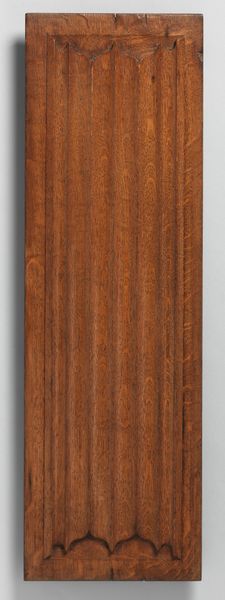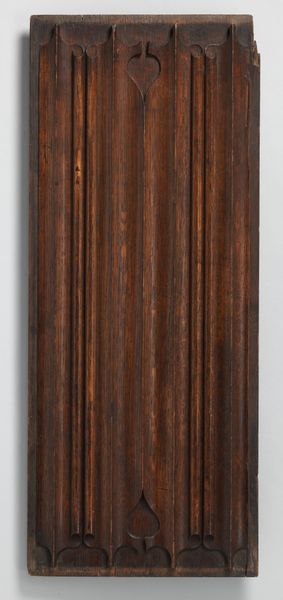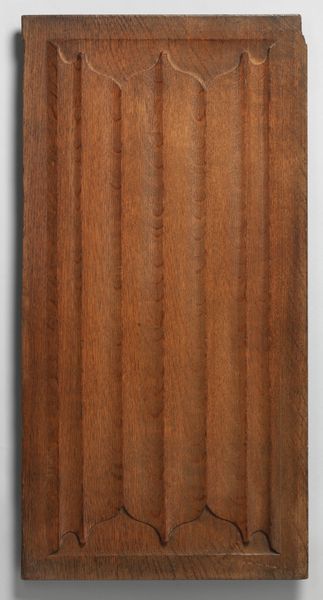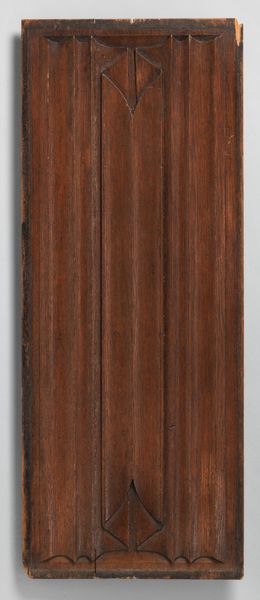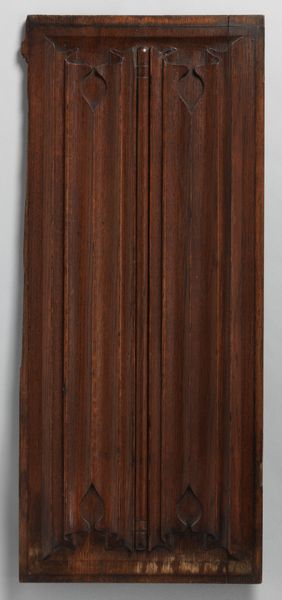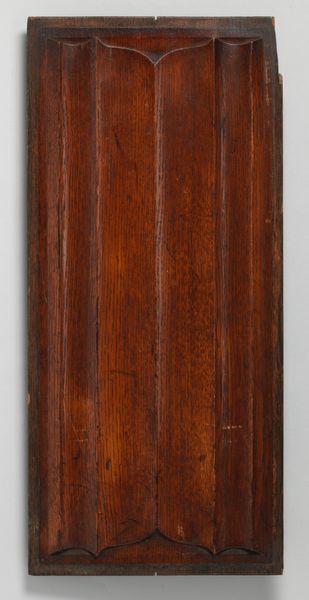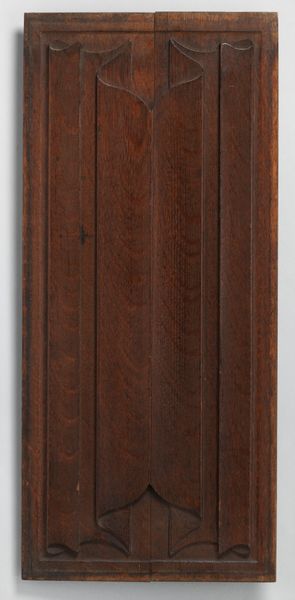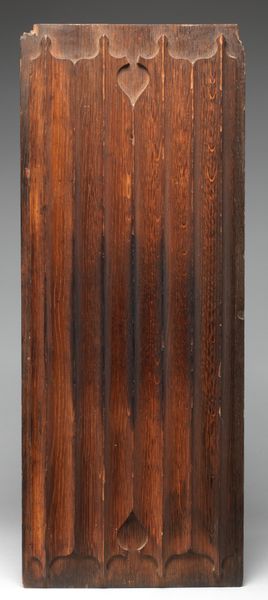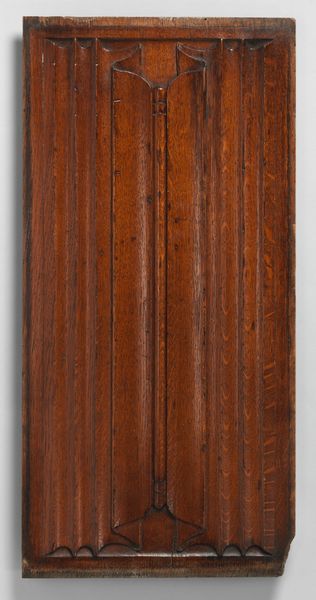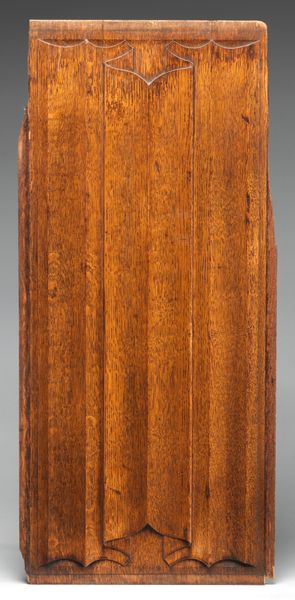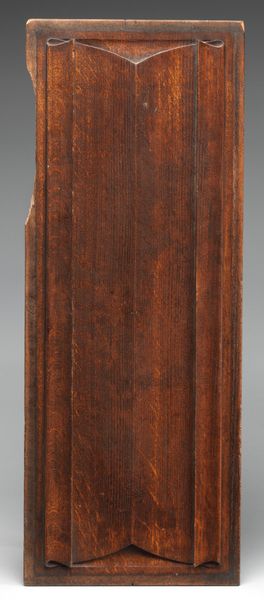
Decorative paneling from the Palace of Westminster 1840s - 1850s
0:00
0:00
Dimensions: Overall (confirmed): 21 11/16 × 9 15/16 × 5/8 in. (55.1 × 25.2 × 1.6 cm)
Copyright: Public Domain
Curator: My first impression? It's almost severe in its simplicity, but somehow deeply satisfying. There's this earthy, quiet confidence to it, like an old hymn. Editor: Indeed. What we're observing is a section of decorative paneling originating from the Palace of Westminster, crafted in the 1840s and 1850s. The artist is Augustus Welby Northmore Pugin. These wood carvings, currently housed at the Met, are exquisite examples of Gothic Revival design. Curator: Gothic, of course. All those rising, almost yearning lines, echoing arches and spires. It makes you think of faith, of reaching beyond... Did Pugin design the whole palace interior? I get this sense of unity from the panel. Editor: He was deeply involved. Pugin championed the Gothic Revival as more than just a style; for him, it represented a moral and spiritual renewal of society, contrasting sharply with the perceived decadence of classical styles. This panel is only a small piece but embodies those ideals, that reaching towards higher moral values, represented by geometric verticality. Curator: That's it! There is an undeniable striving contained within the repetitive geometric design. And of course, using wood—honest, unpretentious, of the earth. I mean, what else do you carve faith into, really? Editor: The choice of material serves a pointed purpose within the historical context. Pugin felt very strongly that modern design, and modern society, had become unmoored from God. His obsession with medieval design had clear ideological and political intentions that favored craft production within an imagined historical precedent. Curator: So it’s a message, then. A gentle, insistent carved-wood sermon about simpler times... which maybe never really existed as purely as he imagined them? Editor: Exactly, though these panels served a function: to construct the mythologies of British identity and governance as embodied in the halls of Parliament, it's necessary to question whose histories are valorized within those spaces, and whose are marginalized. Curator: All these subtle cues adding up, whispers in wood, pointing toward a very particular version of the past… Food for thought. Editor: Absolutely, art always functions within broader discourses of power and cultural representation, making it critical to analyze whose voices are centered, and whose are suppressed, through seemingly simple designs like this panel.
Comments
No comments
Be the first to comment and join the conversation on the ultimate creative platform.
